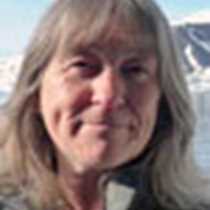We felt its looming presence from behind trailing Scottish clouds and mist, but Ben Nevis itself, the highest mountain in Britain, was nowhere to be seen this morning. Down below, we slipped away from our berth just inside the mouth of the Caledonian Canal, and soon Lord of the Glens was ascending the eight locks forming Neptune’s Staircase.
Thomas Telford, the engineering genius behind the construction of the canal, arranged the locks in three clusters (at either end of the canal and in the center at Fort Augustus) in attempt to minimize costs for both the building and the operation of the canal. It took 22 years to complete this major undertaking, which employed 3,000 local workers during its construction, and provided access between the North Sea and the Atlantic west coast. A government-commissioned ship canal originally designed for naval shipping and fishing boats, it is now mainly used for leisure vessels.
We sailed serenely along the canal, passing through a magnificent landscape of heather-covered hills, green forests, and green fields. Moy Bridge—the last original, hand-cranked Telford swing bridge, with its cheerful and chatty bridgekeeper—slipped by, as did Loch Lochy, Glengarry Castle, Loch Oich, and locks with pretty lockkeepers’ cottages and even prettier gardens. At Kytra Lock, many guests disembarked to hike along the towpath as Lord of the Glens passed by on her way to berth at Fort Augustus. There, a flight of five locks descends to the famous waters of Loch Ness and is lined on either side with charming stone Highland cottages, pubs, and shops. Today a busy and popular summer attraction for visitors, Fort Augustus was founded in 1729 as a fort for government troops in an effort to subdue possible Jacobite insurrections.
Other guests took a longer hike that led to Kilchuiman Burial Ground, a cemetery with ancient yew trees and historic headstones that was originally constructed in the early 18th century. The route brought us by a former Victorian-era Benedictine abbey and then back to the ship through the lockside village.
The evening concluded with traditional Scottish music. Brian, on the small pipes, and Julia, on the accordion, played jigs that set our feet tapping and sweet airs that stirred our souls. A beautiful day in the heart of the Highlands.









